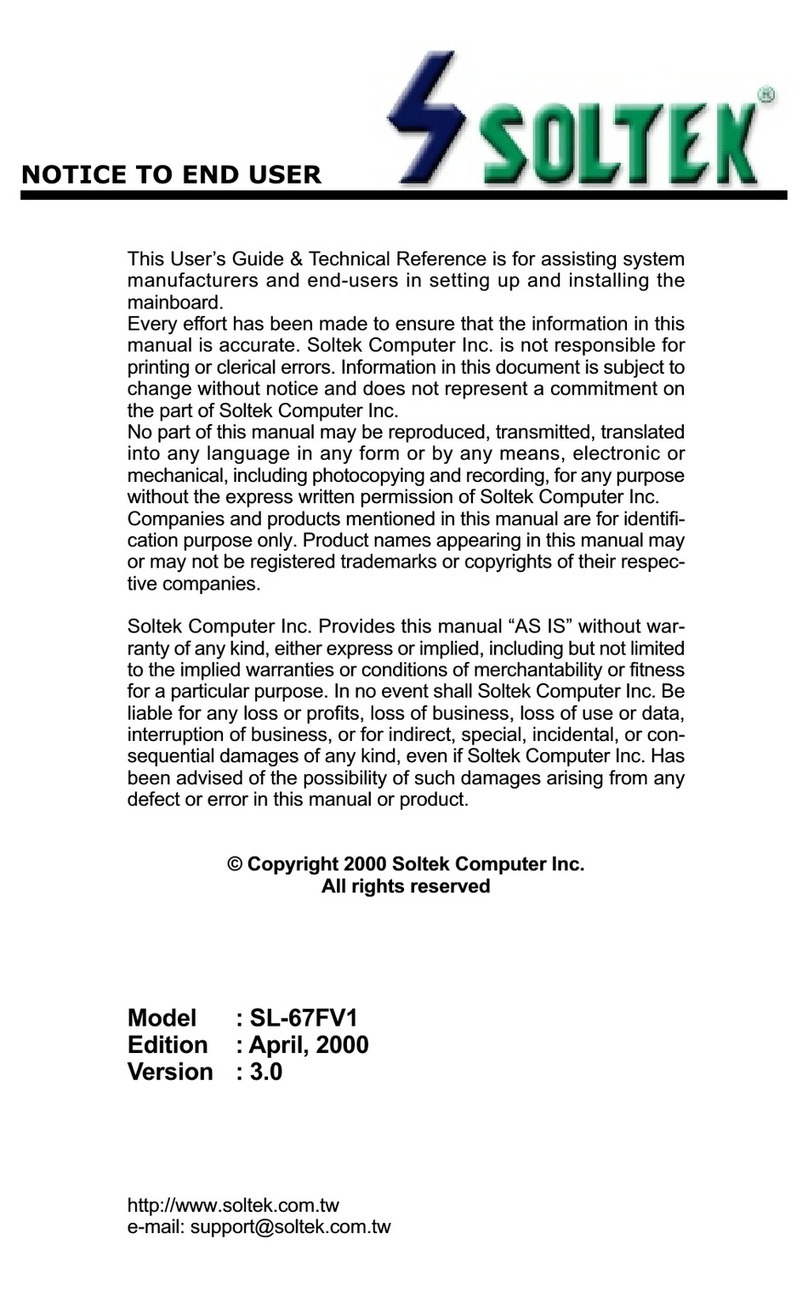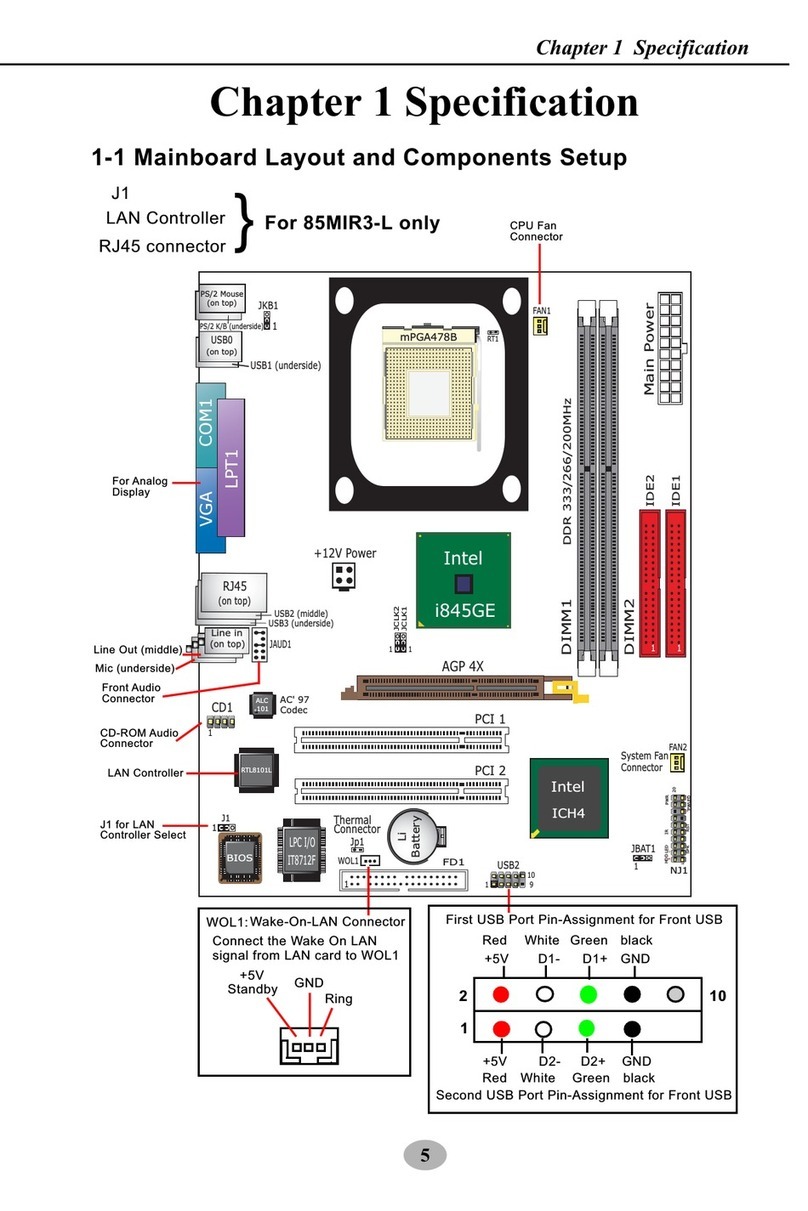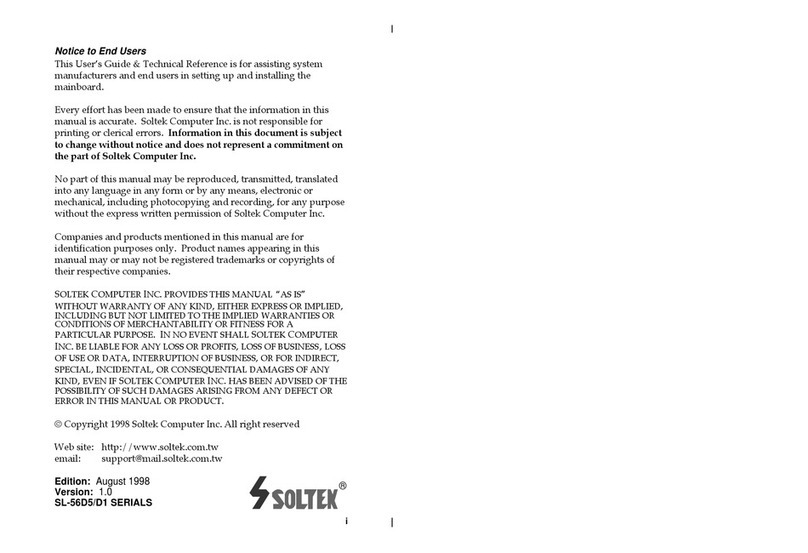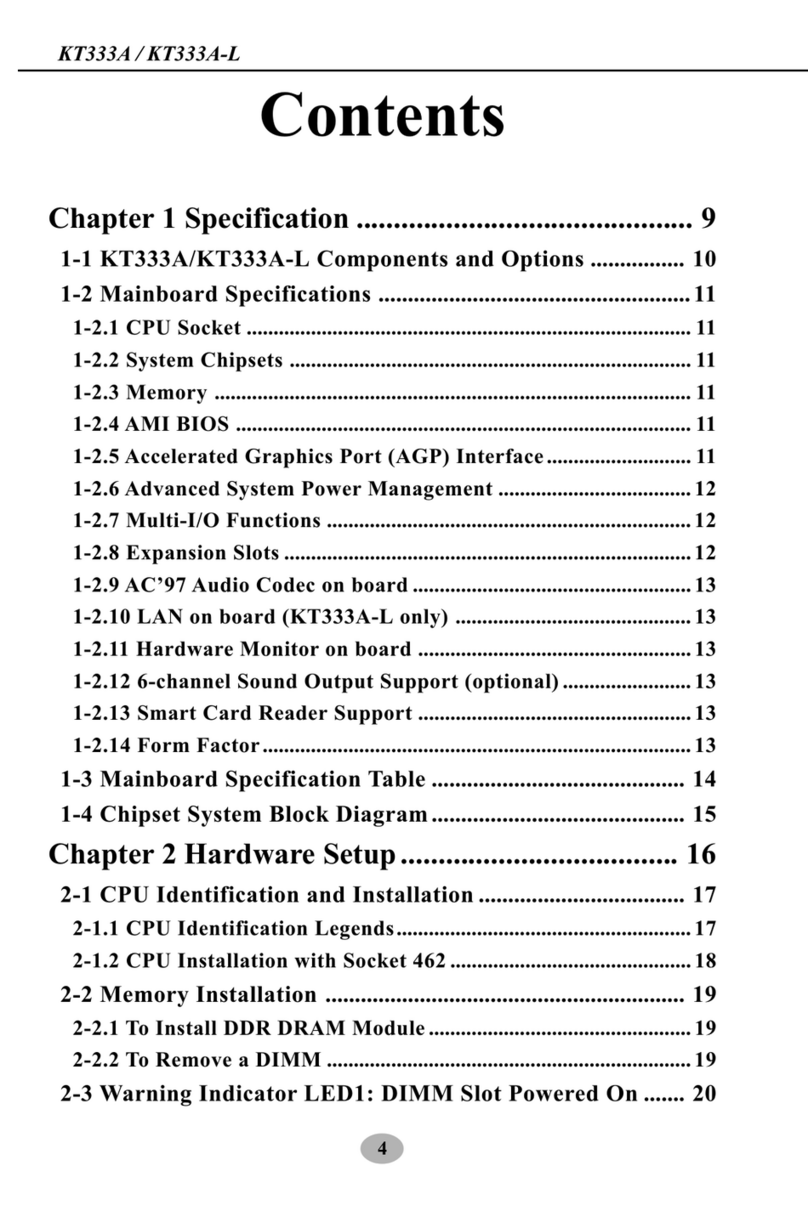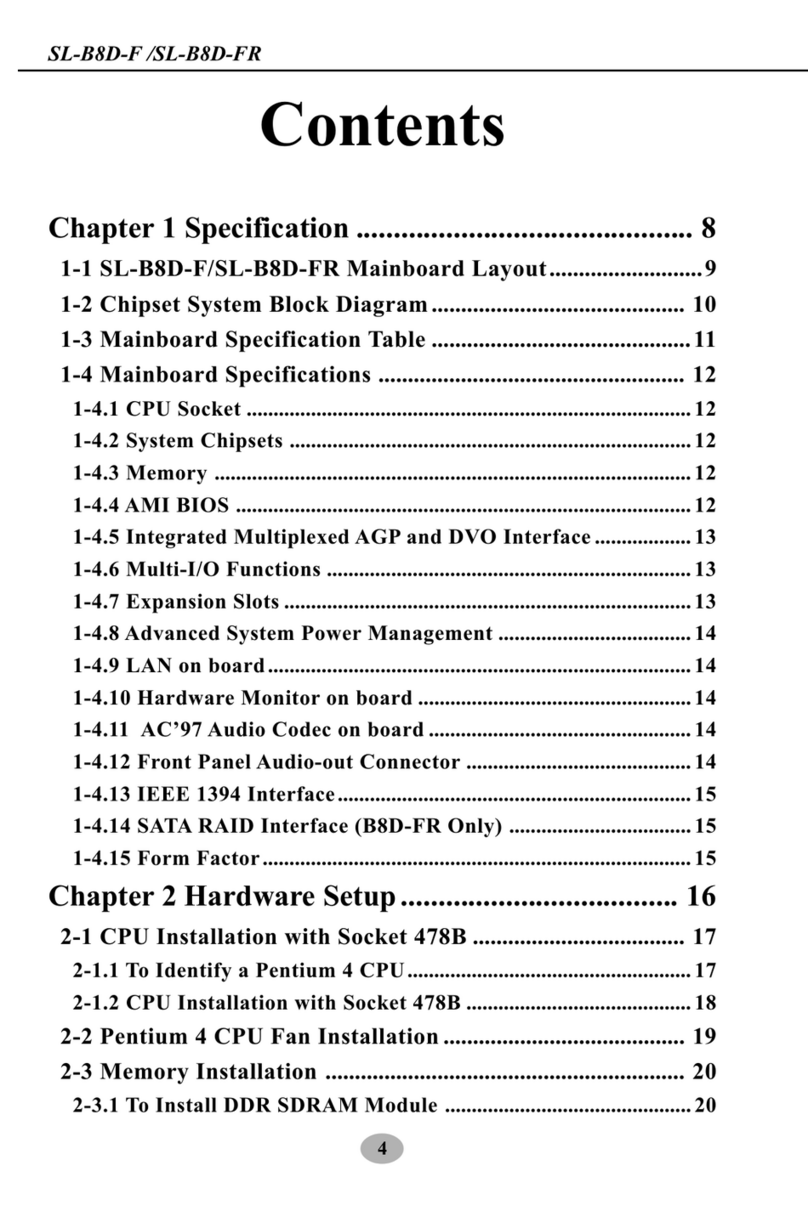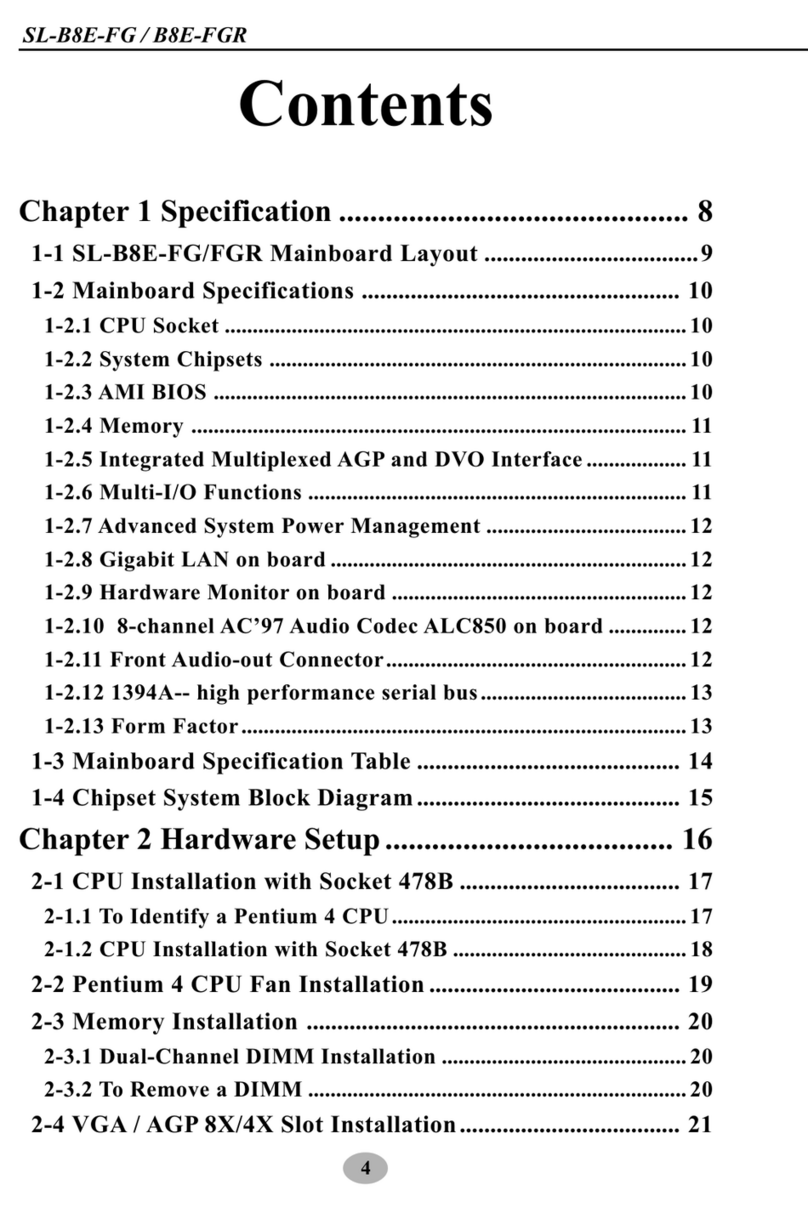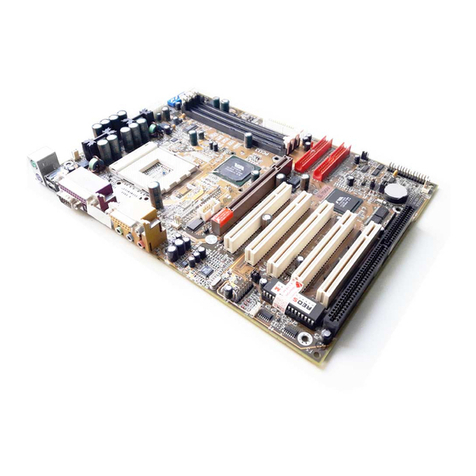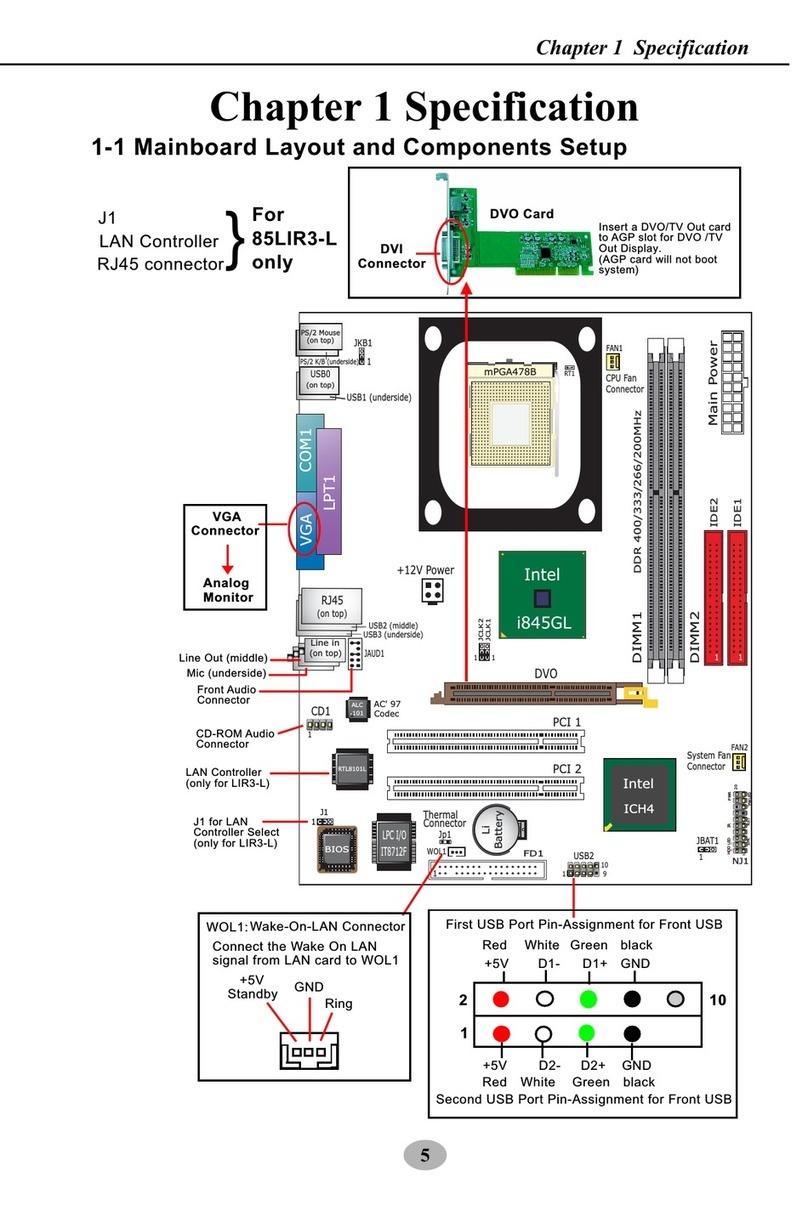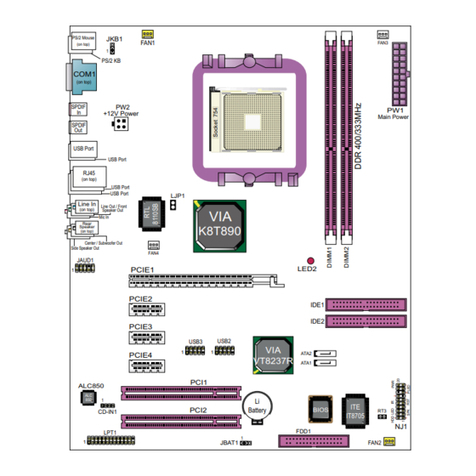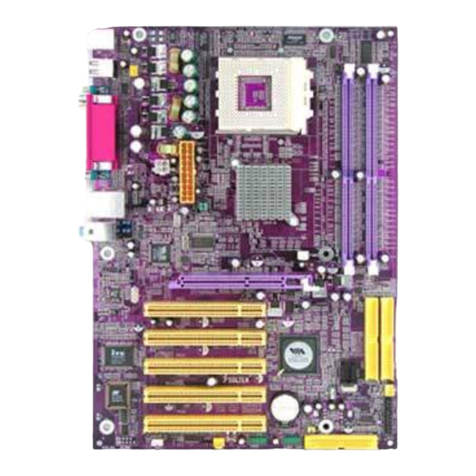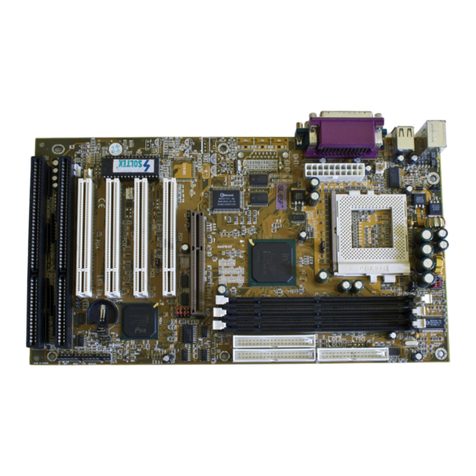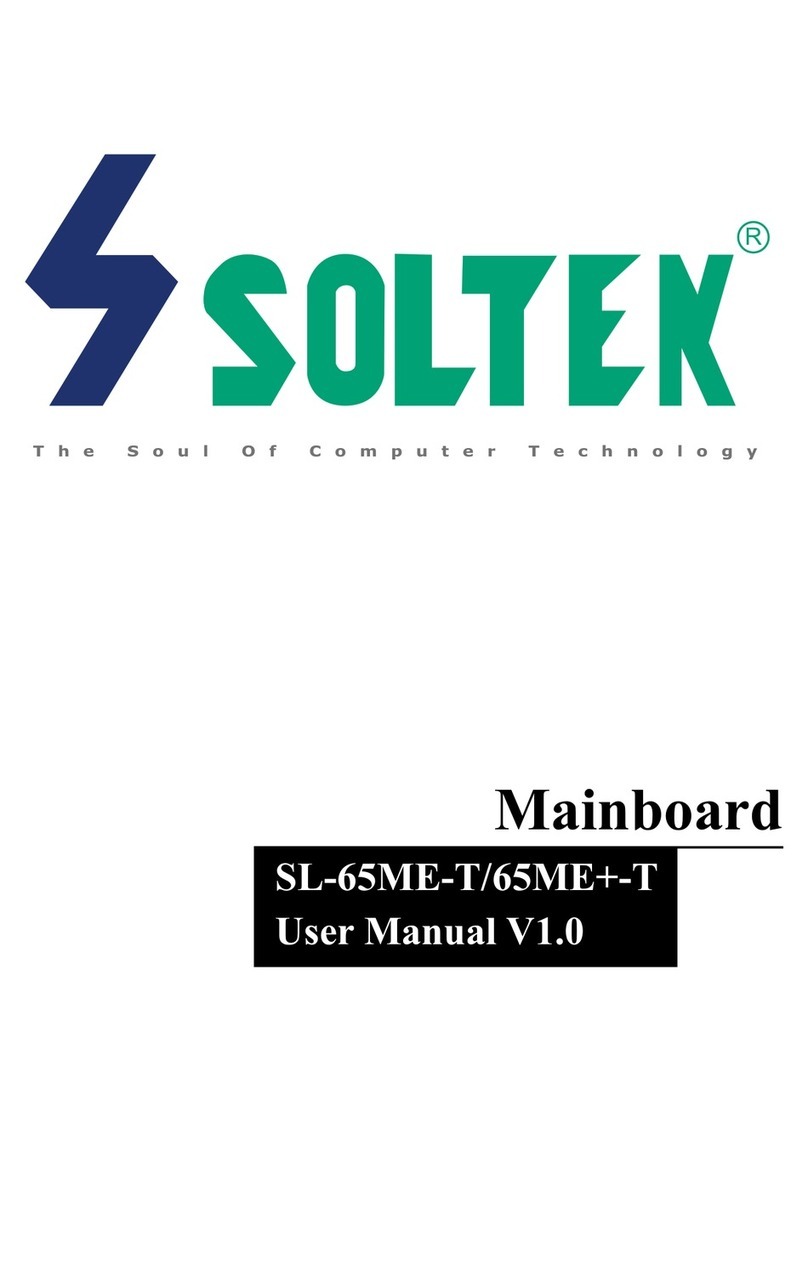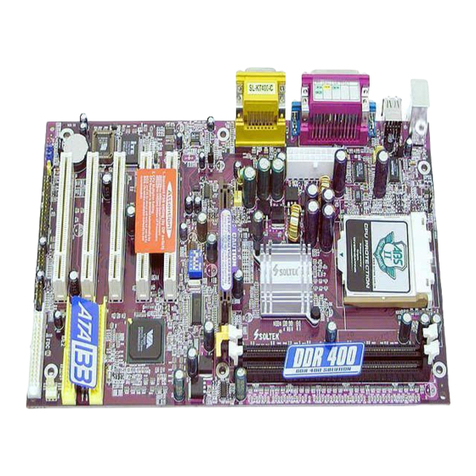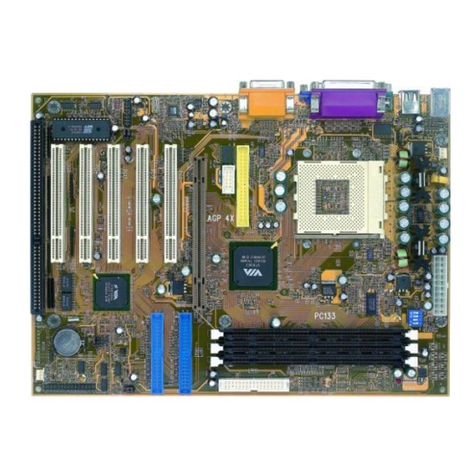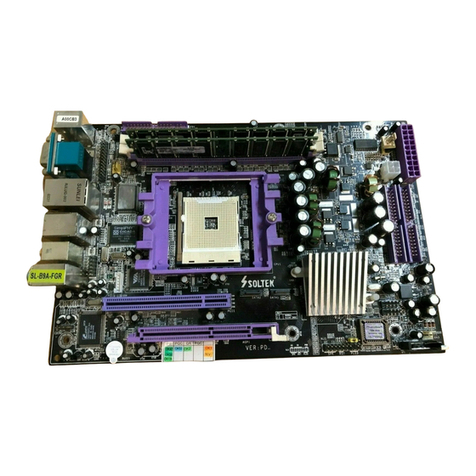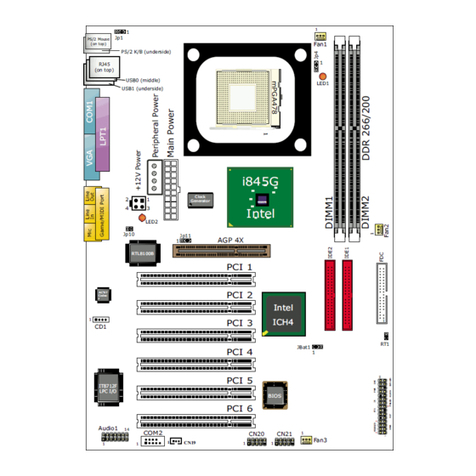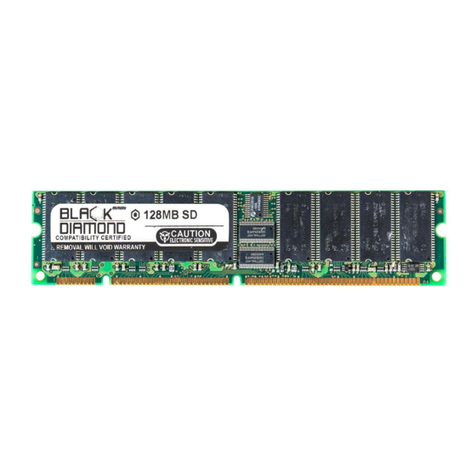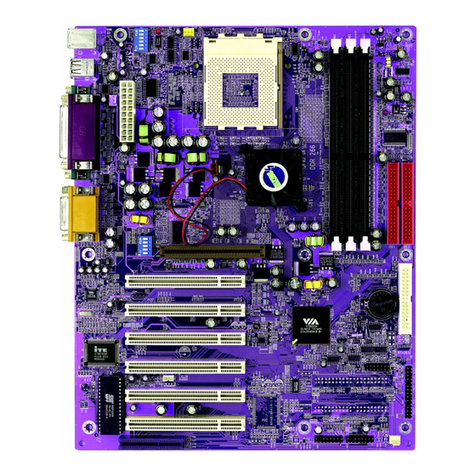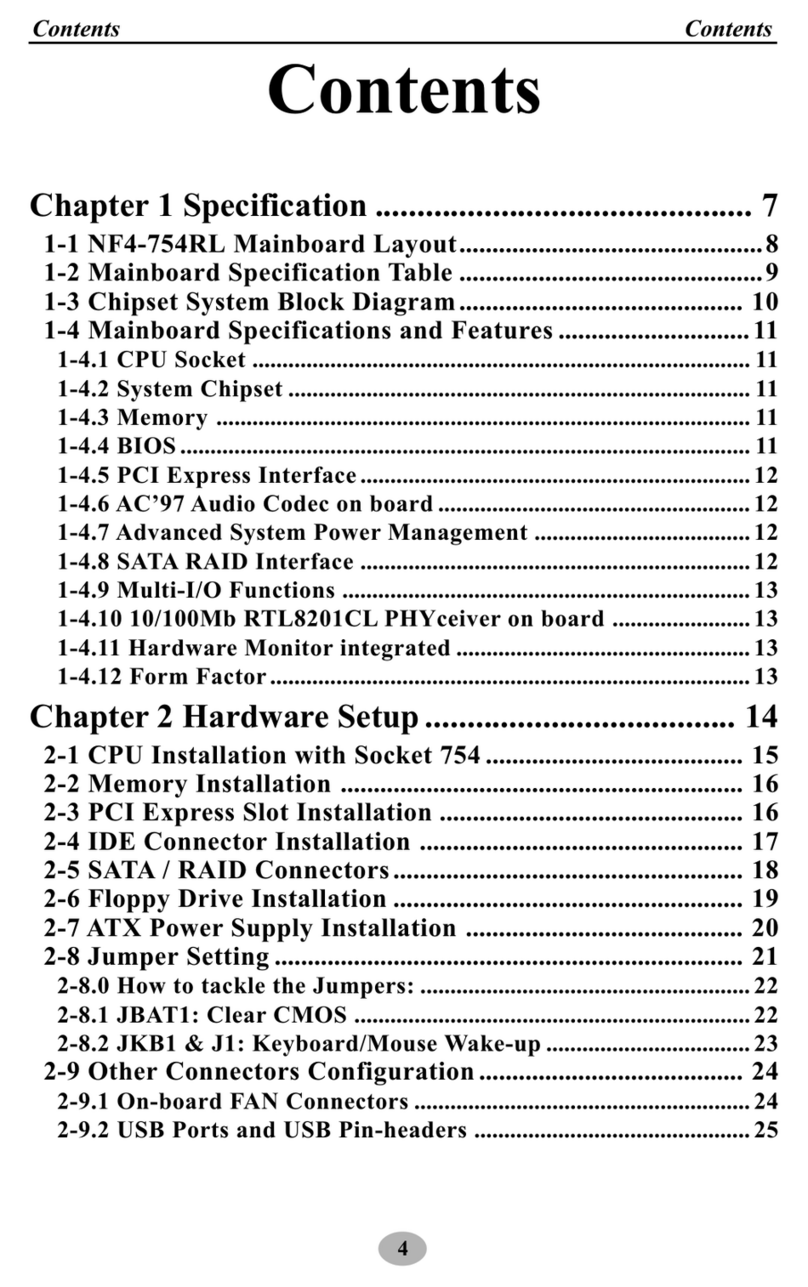
5
Contents
2-5 Floppy Drive Connector ( FDC ) Installation................... 23
2-6 ATX Power Supply Installation .......................................... 24
2-7 Ju per Settings ..................................................................... 25
2-7.1 How to tackle the Ju pers: ....................................................... 26
2-7.2 JCLK1: CPU Clock/Overclock Select...................................... 26
2-7.3 JBAT1: Clear CMOS .................................................................. 27
2-7.4 Jp1: Anti-burn Shield (ABSII) .................................................. 28
2-7.5 Jp3: PS2 KB/Mouse Wake-up ................................................... 29
2-7.6 Jp4: USB KB/Mouse Wake-up .................................................. 29
2-8 Other Connectors Configuration........................................ 30
2-8.1 On-board FAN Connectors ........................................................ 30
2-8.2 USB Ports and USB Pin-headers .............................................. 31
2-8.3 Chassis Panel Connectors .......................................................... 32
2-8.4 PS/2 Mouse And PS/2 Keyboard ............................................... 32
2-8.5 CD-ROM Audio Connectors (CD-In1) .................................... 33
2-8.6 S art Card Reader Connector: SCR1 .................................... 33
2-8.7 Connector WOL1: Wake On LAN............................................ 34
2-8.8 Ther al Connectors.................................................................... 35
2-8.9 Co plex Pin-header (Front Panel Connectors) ..................... 36
2-8.10 Audio 1: 6-channel Sound Output Connector (optional) ...38
2-9 IRQ Description..................................................................... 39
Chapter 3 Software Setup ....................................... 40
3-1 Open Up Support CD: .......................................................... 41
3-2 Proceed to VIA 4-IN-1 Drivers Installation ...................... 42
3-3 AC’97 Audio Driver Installation......................................... 44
3-3.1 AC’97 Driver Installation........................................................... 44
3-3.2 6-channel Verification ................................................................. 45
3-4 Install USB 2.0 Driver for Win98 / Me / 2000 / XP.......... 48
3-5 Install Hardware Monitor Utility ....................................... 50
3-5.1 Installation ................................................................................... 50
3-5.2 Verification .................................................................................. 51
